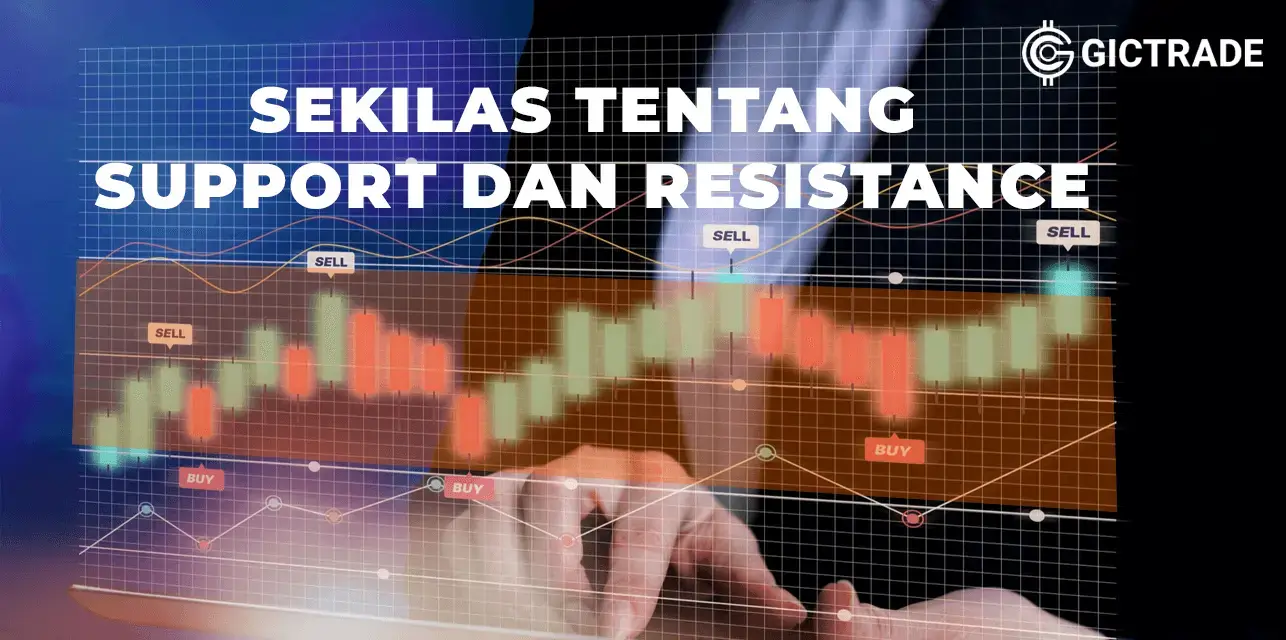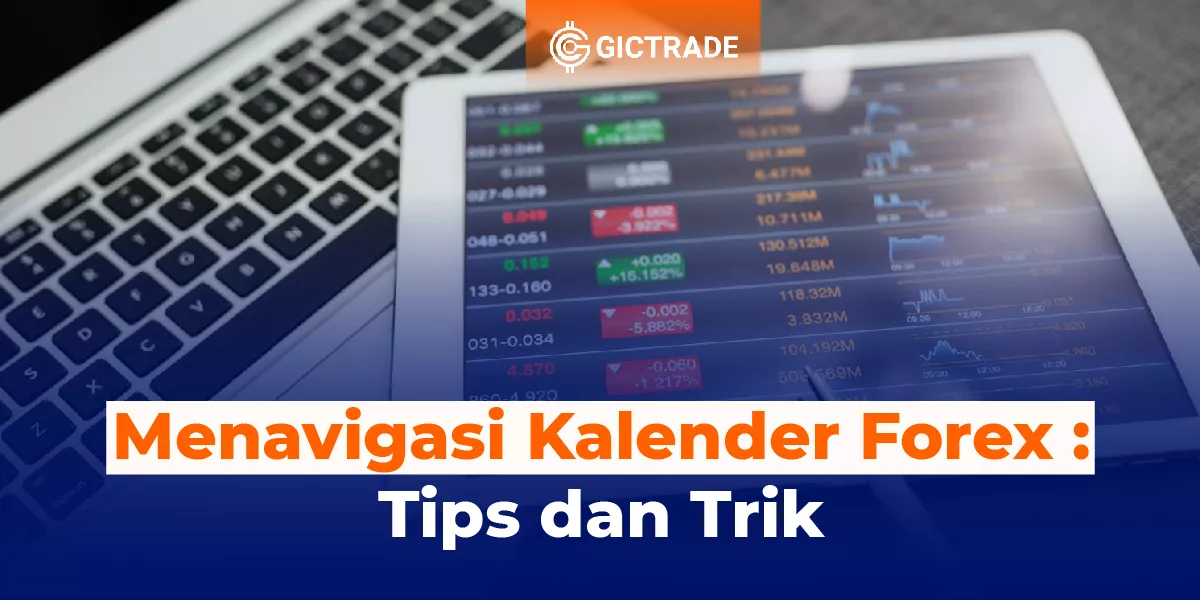Support and Resistance are the best way to identify target prices. Support and resistance are specific price points on the chart that are expected to attract the maximum amount of buy or sell. Check out the full article through the following journal and follow
GIC's Instagram for forex calendar and morning brief every day!

What is Support and Resistance in Trading
The best way to identify the target price is to identify support and resistance points. Support and resistance (S&R) are specific price points on the chart that are expected to attract the maximum amount of buy or sell. The support price is the price at which one can expect more buyers than sellers. Likewise, a resistance price is a price at which one can expect more sellers than buyers. Independently, traders can use the S&R to identify trade entry points as well. As the name suggests, resistance is something that stops the price from rising further. A resistance level is a price point on a chart where traders expect the maximum supply (in terms of selling) for a stock/index.
The resistance level is always above the current market price. The best way to identify the target price is to identify support and resistance points. Support and resistance (S&R) are specific price points on the chart that are expected to attract the maximum amount of buy or sell. The support price is the price at which one can expect more buyers than sellers. Likewise, a resistance price is a price at which one can expect more sellers than buyers. Independently, traders can use the S&R to identify trade entry points as well. As the name suggests, resistance is something that stops the price from rising further. A resistance level is a price point on a chart where traders expect the maximum supply (in terms of selling) for a stock/index. The resistance level is always above the current market price. [caption id="attachment_21317" align="aligncenter" width="823"]

Support and resistance[/caption] After learning about resistance, understanding support levels should be quite simple and intuitive. As the name suggests, support is something that prevents the price from falling further. A support level is a price point on a chart where a trader expects maximum demand (in terms of buying) to enter a stock/index. Whenever the price falls to the support line, it is likely to bounce back. The support level
is always below the current market price. There is a maximum probability that the price could fall until it supports, consolidates, absorbs all the demand, and then starts moving upwards. Support is one of the important technical levels that market participants are looking for in a falling market. Support often acts as a trigger to buy. Here is a chart from Cipla Limited. The horizontal line coinciding at 435 on the chart marks the support level for Cipla. [caption id="attachment_21318" align="aligncenter" width="1024"]

support dan resistance[/caption]
Getting to Know Forex Technical Analysis and How to Do It
Determining Support and Resistance
Below are three different ways to interpret support and resistance from a price chart:
- Horizontal support and resistance: It describes a situation where securities may tend to trade up and down in a sideways price range until a breakout occurs where a new range point is established.
- Trend support and resistance: This occurs when a security is trending up or down in a price channel that can provide support and resistance in a trend.
- Gradual support and resistance: It describes a situation where a security will be traded in horizontal steps that adjust up or down to form a long-term trend.

How to Know Support and Resistance Levels
The strongest support or resistance level will follow the trend more often. That is, if we are in a bullish trend, the pullback level to the support will be more frequent than not stronger than the resistance level above it. This is because the underlying order flow in a bull trend is more dominant on the buy side.
Holding some tests with trend levels is usually a good indicator of its strength level. Until the trend changes, hedge funds and large institutional players will be looking to buy more than sell, so the flow of orders at those pullback levels will often be stronger than the resistance levels, which are often multiplied faster. Below are some examples.

contoh grafik S&R[/caption] In this chart on
USDMXN (daily chart), notice how the resistance level only lasted a few touches before breaking, while
the key support level held a few touches before making the new leg higher? This will tell you where the order flow is dominant (on the bull side) and until you see the structure and flow of these orders changing, you want to trade with the trend as much as possible.
NOTE: If you want to see a good example of me trading with the trend using the main S&R level, click on that link to watch my video of a
profit of +300 pips trading the S/R level. Another example of how a support level with a trend holds a lot of touches is in USDJPY (daily chart).

support dan resistance[/caption] Notice how the support level holds a lot of touches in the middle. The ability
to hold some touches tells you that the more dominant order flow is on the bull side as they are able to handle some tests while holding the line. Also notice how the last support level (~105.38) was barely touched before generating a very strong bull movement? The quick reaction that takes the previous swing high often indicates impulsivity and a strong number of order flows are present to hold the level for 1-2 candles before skyrocketing higher 1500 pips. So be sure to note these variables as indicating strength at a certain level:
- Hold the line after a few touches
- strong/short reaction of the key level S/R
- with trend levels will often be stronger than counter-trend levels
Now that you have a few variables to look for, make sure you build your skills in identifying these variables until they become subconscious.
7 Best Forex Trading Techniques For Beginners
Support and Resistance Trading Strategies
Some key aspects to consider when using support and resistance levels in your trading strategy:
- Look at the higher timeframes, but make your trades on the lower timeframes;
- Wait for a trend reversal;
- Look at the previous most recent resistance or support level to see how low or high the price could move;
- If trying to identify countertrends in support and resistance, look for the most recent level that reached that price at least twice before. If the trend is going in the other direction, look at some of the other tested price levels to see where the price could reach. Traders often use multiple support and resistance levels on multiple timeframes to forecast where the price may go;
- Look for the 1-2-3 movement; They are often followed by reversals. If the price breaks through the previous support or resistance, place a short or long trade within this period of support area.
Examples of simple support and resistance in stocks
Traders can use support and resistance levels to determine whether to buy or sell; Here is a simple example to understand the concept of these two lines and how they are used by traders. For example, Michael is a day trader interested in buying Apple (NASDAQ: AAPL) stock. He wanted to know if to take a long position and would use the support and resistance levels on the chart to identify this. Michael decided to look at the graphically visualized annual price and volume data on the chart. He noticed that Apple's stock price reached $160 over the past year; Therefore, $160 is the resistance level. He also sees that the price has not dropped below $119 over the past year, which is then a support level. With this information, Michael will wait until the stock price drops near $119 to trade and buy Apple stock at the support level, assuming this was the lowest value he could buy. The idea behind these two lines may seem simple at first. However, you may find that after reading further, the concept is a bit more difficult to understand because these levels can come in many forms. After knowing about Support and Resistance, then you can say that you have understood trading well. You just need to learn other terms to continue learning strategies in trading. Start trading on GIC by trying out an
ECN account to experience all its advantages. Also participate in the
GIC Gebyar Prize to get a total prize of 1 mIliar without being drawn! Register now!


 Support and resistance[/caption] After learning about resistance, understanding support levels should be quite simple and intuitive. As the name suggests, support is something that prevents the price from falling further. A support level is a price point on a chart where a trader expects maximum demand (in terms of buying) to enter a stock/index. Whenever the price falls to the support line, it is likely to bounce back. The support level is always below the current market price. There is a maximum probability that the price could fall until it supports, consolidates, absorbs all the demand, and then starts moving upwards. Support is one of the important technical levels that market participants are looking for in a falling market. Support often acts as a trigger to buy. Here is a chart from Cipla Limited. The horizontal line coinciding at 435 on the chart marks the support level for Cipla. [caption id="attachment_21318" align="aligncenter" width="1024"]
Support and resistance[/caption] After learning about resistance, understanding support levels should be quite simple and intuitive. As the name suggests, support is something that prevents the price from falling further. A support level is a price point on a chart where a trader expects maximum demand (in terms of buying) to enter a stock/index. Whenever the price falls to the support line, it is likely to bounce back. The support level is always below the current market price. There is a maximum probability that the price could fall until it supports, consolidates, absorbs all the demand, and then starts moving upwards. Support is one of the important technical levels that market participants are looking for in a falling market. Support often acts as a trigger to buy. Here is a chart from Cipla Limited. The horizontal line coinciding at 435 on the chart marks the support level for Cipla. [caption id="attachment_21318" align="aligncenter" width="1024"] support dan resistance[/caption]
support dan resistance[/caption]

 contoh grafik S&R[/caption] In this chart on USDMXN (daily chart), notice how the resistance level only lasted a few touches before breaking, while the key support level held a few touches before making the new leg higher? This will tell you where the order flow is dominant (on the bull side) and until you see the structure and flow of these orders changing, you want to trade with the trend as much as possible. NOTE: If you want to see a good example of me trading with the trend using the main S&R level, click on that link to watch my video of a profit of +300 pips trading the S/R level. Another example of how a support level with a trend holds a lot of touches is in USDJPY (daily chart).
contoh grafik S&R[/caption] In this chart on USDMXN (daily chart), notice how the resistance level only lasted a few touches before breaking, while the key support level held a few touches before making the new leg higher? This will tell you where the order flow is dominant (on the bull side) and until you see the structure and flow of these orders changing, you want to trade with the trend as much as possible. NOTE: If you want to see a good example of me trading with the trend using the main S&R level, click on that link to watch my video of a profit of +300 pips trading the S/R level. Another example of how a support level with a trend holds a lot of touches is in USDJPY (daily chart). support dan resistance[/caption] Notice how the support level holds a lot of touches in the middle. The ability to hold some touches tells you that the more dominant order flow is on the bull side as they are able to handle some tests while holding the line. Also notice how the last support level (~105.38) was barely touched before generating a very strong bull movement? The quick reaction that takes the previous swing high often indicates impulsivity and a strong number of order flows are present to hold the level for 1-2 candles before skyrocketing higher 1500 pips. So be sure to note these variables as indicating strength at a certain level:
support dan resistance[/caption] Notice how the support level holds a lot of touches in the middle. The ability to hold some touches tells you that the more dominant order flow is on the bull side as they are able to handle some tests while holding the line. Also notice how the last support level (~105.38) was barely touched before generating a very strong bull movement? The quick reaction that takes the previous swing high often indicates impulsivity and a strong number of order flows are present to hold the level for 1-2 candles before skyrocketing higher 1500 pips. So be sure to note these variables as indicating strength at a certain level:

 Last:
Last: 







